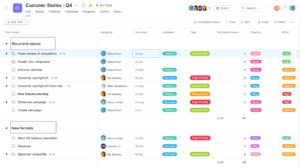MRP (material requirements planning) is a production planning, scheduling and inventory system
Here are 7 top reasons to use an MRP:
- To make the process of production easier.
- To make material planning as automated as possible.
- Helping to spare time for more complicated tasks.
- To ensure that there is enough material.
- Higher efficiency.
- Decrease in capital cost.
- Timely delivery of manufactured goods to your customers.
What MRPs provide

MRP (material requirements planning) is a production planning, scheduling and inventory system that is used to manage manufacturing processes from the beginning to the end. This makes it one of the most predominant ways to organize your inventory. It is less time-consuming and allows you to focus on other tasks.
Most companies no longer schedule production manually. It is almost impossible to keep track of everything and have it run smoothly without any complexities. Instead, companies are opting to use production planning software to control the planning process and automate it under one system, making it perfect for small businesses and workshops.
Having an MRP system will make life easier as there is no manual copy-pasting, updating of spreadsheets and no stressful stock-outs. It is also cloud-based.
The process consists of three primary steps:
- Taking inventory of the materials and components.
- Identifying which additional materials are needed
- Scheduling their production and purchase.
Disadvantages of MRP
MRP is demand-oriented, so when a company is not dependent on demand, this can cause conflict with the system. Without the smooth demand and time regularity, it can leave your company with either too much or too little of a said material, proving that it is best for small companies or companies with simpler operations to invest in an MRP system. You should always keep clean records and enter the data with precise measures. The lack of data accuracy can cause an impact on your delivery schedule and inventory levels.
Keeping up with the times
Choosing to use cloud based MRPs is a lot more efficient, and gaining compliance is a lot easier than with other traditional software. The MRP provider updates the cloud application and all of the clients at the same time. With more traditional systems you could be waiting a while for an upgrade to your program, or even doing it manually could take forever to download. 2018 was the year that CEOs of companies were getting excited by the cloud-based MRP as it allowed manufacturers to outgrow their single based production units. Flexibility is the necessity in this day and age; having real-time visibility into your production plans, inventory control and procurement is a winner.
The future seems to be bright with MRPs, as it is continually growing in the manufacturing world. Software merchandisers who started on the cloud have stolen a great amount of market share from traditional sellers, who are now struggling to keep up.
The nature of the MRP cloud has changed the way companies manage their production, their employees and most of all their expenses. Being the helping hand for growth, there is optimism in the air for the world of manufacturing if the PMI is anything to go by.





